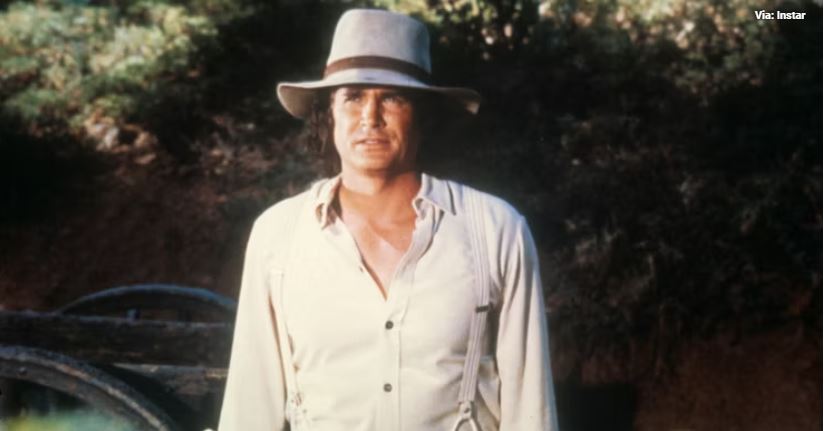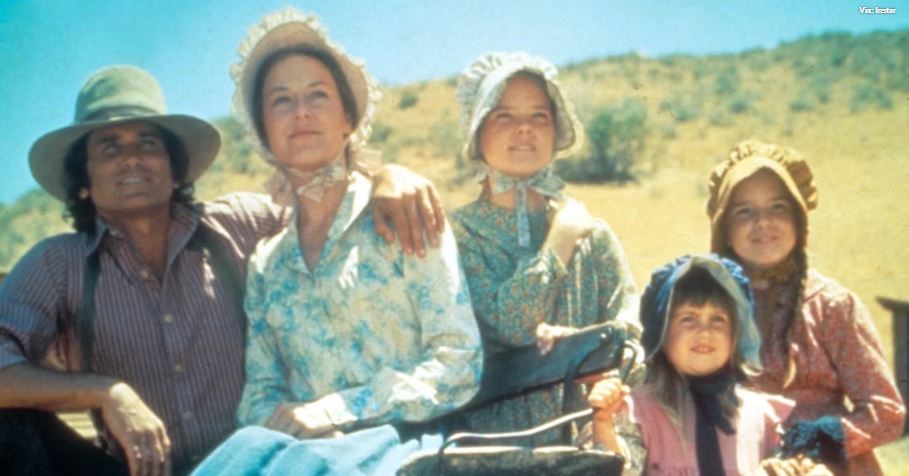Little House on the Prairie made several of the show’s youngest stars household names. The historical drama, which aired on television from 1974 to 1983, featured prominent roles for Melissa Sue Anderson (Mary Ingalls), Melissa Gilbert (Laura Ingalls), and Alison Arngrim (Nellie Oleson). From intense rivalries between cast members to affairs and literal property destruction, the set of Little House on the Prairie was truly a peculiar environment that seamlessly set the tone for complication despite the familial energy of the show.For instance, Michael Landon, who served as executive producer, required the cast to conduct themselves as professionals, regardless of their age.
Michael Landon Was Pretty Tough On The Cast Of Little House On The Prairie
Arngrim wrote about Landon’s management of the Little House cast and crew in her book Confessions of a Prairie B*tch: How I Survived Nellie Oleson and Learned to Love Being Hated.
Landon was a man who “believed in hard work for everyone,” she wrote. As a child actor, “We were expected to show up on time, know our lines, put in our best performance, and call our elders ‘sir’ and ‘ma’am’.”
Arngrim disclosed that the cast members of Little House were treated fairly but were not pampered or smothered during filming. Landon didn’t do anything extra for his cast on purpose so that they’d learn to appreciate the value of their work.
Michael Landon’s influence was felt throughout the production of Little House on the Prairie, and he was said to have been so controlling that he eventually drove away his co-executive producer, Ed Friendly. According to an interview from 1974 with People, Friendly was not happy with Landon’s creative output and felt he had no place in the writing process.
The cast members’ experience wasn’t rosy outside of the commotion of production rivalries either. The actors constantly butted heads backstage, despite the show’s focus on family values.

Melissa Gilbert And Melissa Sue Anderson Didn’t Get Along At All
Melissa Gilbert and Alison Arngrim were inseparable as co-stars, but Melissa Gilbert’s relationship with Melissa Sue Anderson was less amicable.
From what Arngrim recalls in her memoir, Gilbert expressed her feelings for Anderson openly and honestly. Gilbert warned, “And whatever you do, watch out for that Melissa Sue Anderson. She’s very dangerous. She’s evil, and I hate her.” Yikes!
Gilbert’s on-screen older sister, Mary Ingalls, was portrayed by Anderson. For the benefit of the audience, they pretended to be loving siblings by setting aside their differences.
In her memoir Prairie Tale, in which she reflects on her time on “Little House on the Prairie,” Gilbert depicts Anderson as a cold and bratty character. There was mutual distaste. Though Anderson has remained silent on the subject, their animosity remains.
“From the start, for whatever reason, we never had a real sisterly kinship. She was a strikingly pretty girl, and I wasn’t, at least I didn’t think so,” Gilbert notes.
Elaborating further, she said, “There was a distance to her, a coldness. Though sometimes I wonder if it was just that I never knew how to get her to let me in. She wasn’t easy to get along with.” She says of Anderson, “I think her reserve came across on-screen and was certainly apparent off-screen, whereas I wore my emotions as if they were a neon green T-shirt that glowed in the dark.”
While Gilbert wasn’t the only one who felt that way about Anderson, the animosity between the cast members was the most prominent off-screen. Some of the actors have complained that Anderson was distant during their time on set.
Michael Landon Had An Affair With The Understudy Of A Cast Member

The actress who played Caroline “Ma” Ingalls in the show has spoken out about how Michael Landon, who played her virtuous on-screen husband, would brazenly discuss his “revived libido” on set.
A natural supplement Landon had begun taking had done wonders for his libido, and he couldn’t stop raving about it. The cast and crew soon found out the truth about his braggadocio: The married actor was having an affair with Cindy Clerico, a teenage stand-in for Melissa Francis (Cassandra Cooper Ingalls). The woman was only 18, making Landon her junior by over a decade, according to The Daily Mail.
The ripple effects of the scandal that made national headlines were felt by everyone on the close-knit set. Karen Grassle who played Caroline Ingalls was deeply troubled by this and noticed tension among the cast members upon everybody finding out.
Katherine “Scottie” MacGregor, who played the haughty shop owner Harriet Olsen, found the affair of the early 1980s particularly repugnant, according to Grassle. Due to her unfairly low salary, her relationship with Landon was already tense, and this didn’t help with the on-set feud among cast members, not unlike between Ryan Golsing and director Peter Jackson.
Grassle explained MacGregor’s low opinion of Landon to The Post, saying, “It was mostly the lack of appreciation, but it was also the way he treated women in general.” Most of the cast was friendly with Landon’s then-wife Lynn, which only exacerbated his affair with Clerico.
“I knew his wife,” Grassle said. “I had been in their home. She had been kind to me. And I thought about her children. There were three of them still at home and younger than Cindy.”
After Lynn found out where Landon was hiding out with his squeeze, she decided to pay a visit. Lynn allegedly threw a bottle of vodka at the head of “America’s favorite dad,” according to media reports.
Losing endorsement deals, including with Kodak, was minor compared to the loss of respect from co-stars like Melissa Gilbert. Gilbert had always considered him to be a father figure. After finding out about his extramarital affair, she avoided him and didn’t show up to his third wedding.
What Happened To The Town In The Little House On The Prairie?

The television series established Walnut Grove as a comfortable setting for its viewers. It’s a bit shocking to get to the final episode and see the townsfolk blow Walnut Grove to bits. In the fictional world of the show, the defiant residents of Walnut Grove decide to destroy their town rather than see it fall into the hands of a heartless developer. But backstage practicality was the real reason.
The Simi Valley sets were constructed on leased property, and as part of the original lease agreement, the network agreed to return the property in substantially the same condition in which it was found. The painstakingly built town had to be destroyed eventually, so executive producer Michael Landon opted for the most spectacular and satisfying method.
He stated to The New York Times, “I think it makes for a good strong pioneer ending. It was also a nice catharsis for the cast and crew. There were lots of tears when we finally blew up the town.”
Let’s hope so. It appeared catharsis was much needed.
